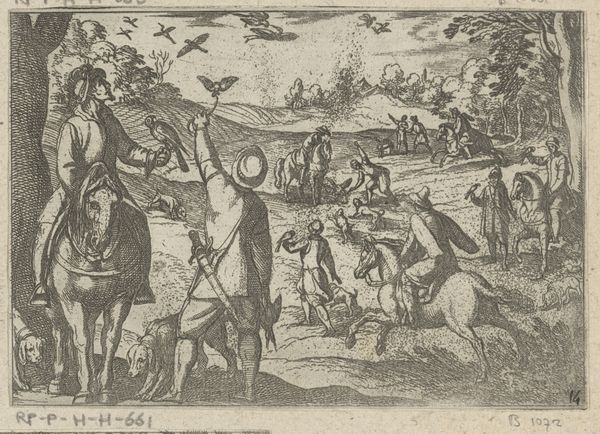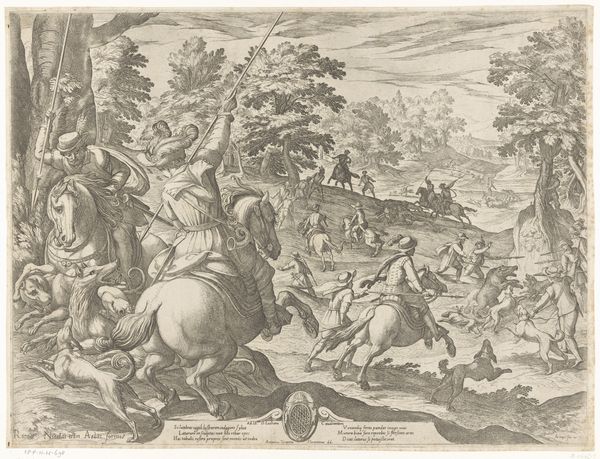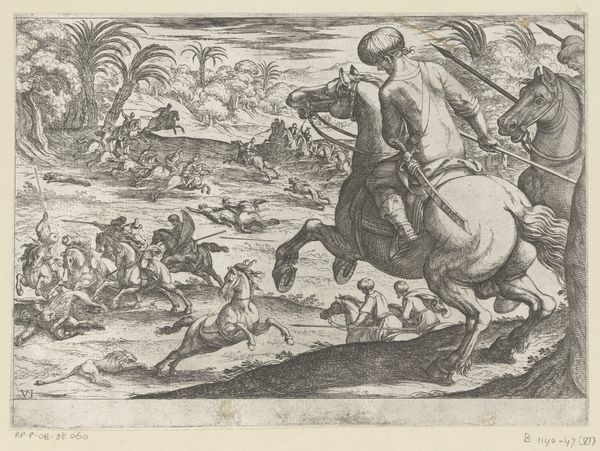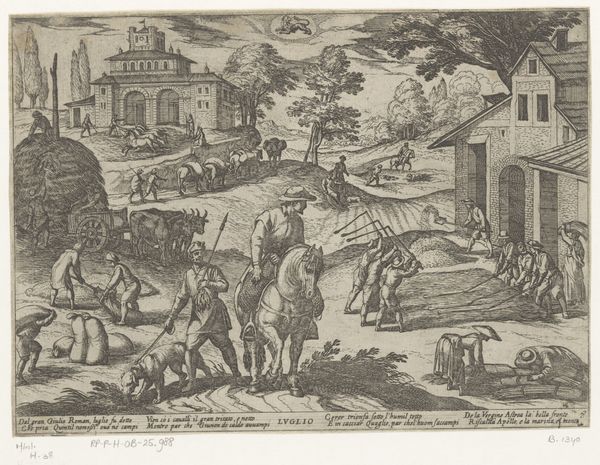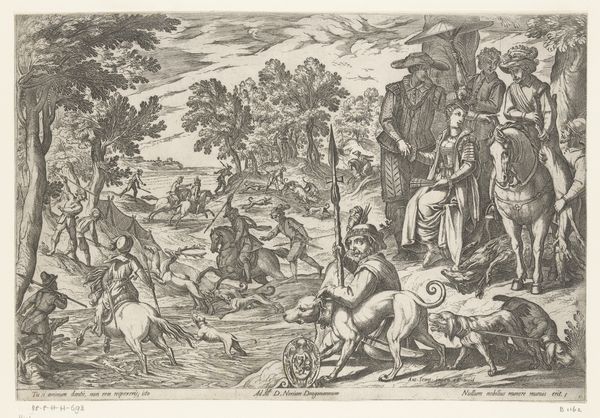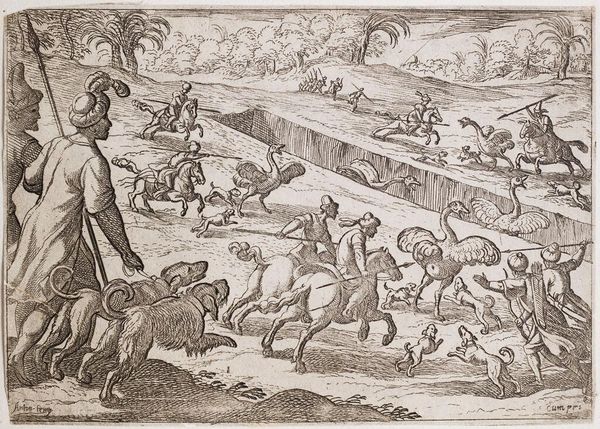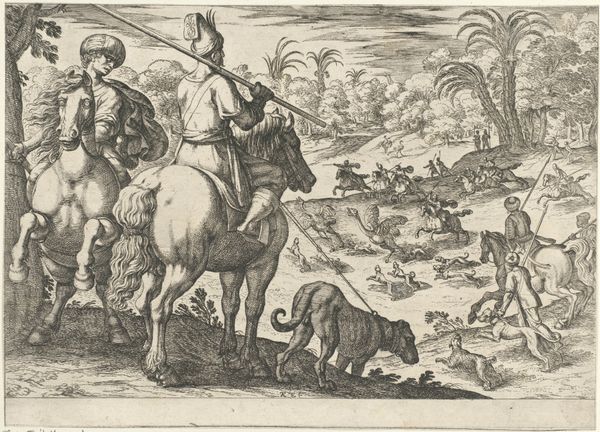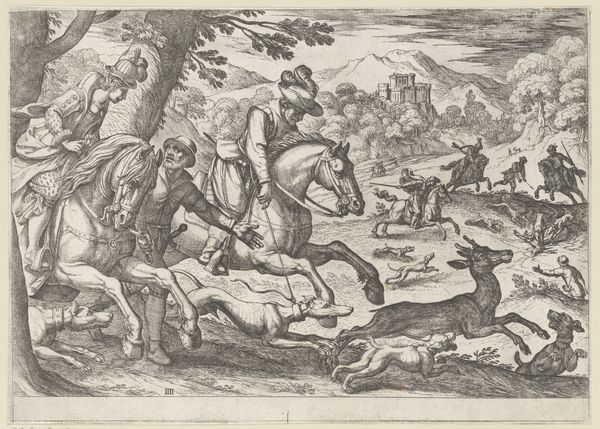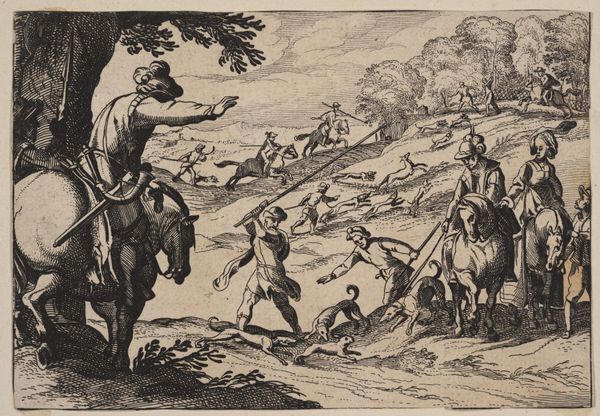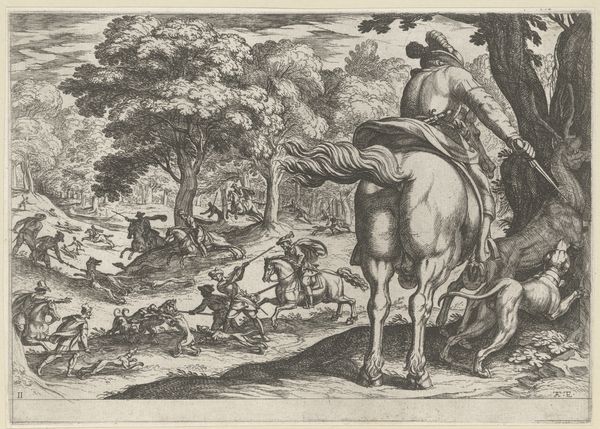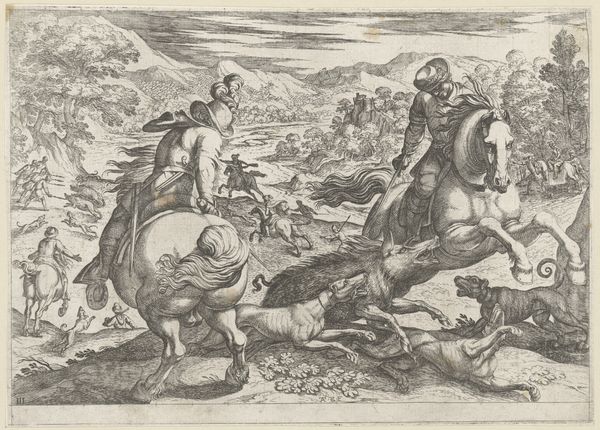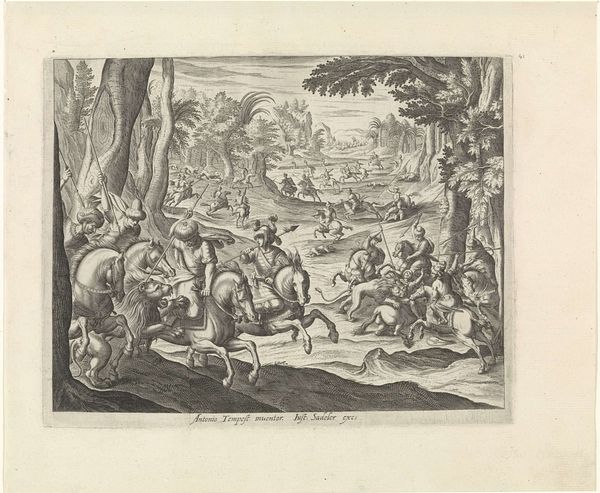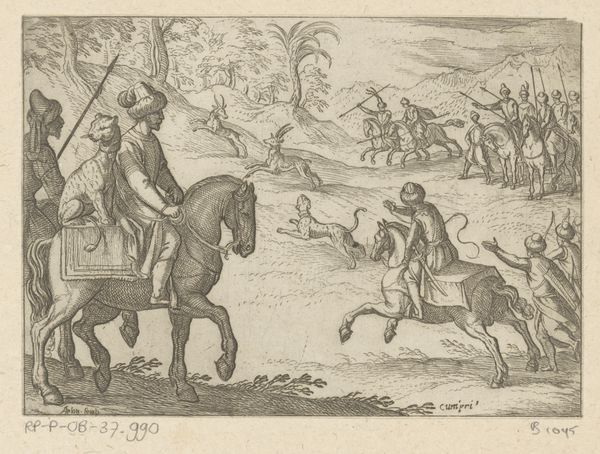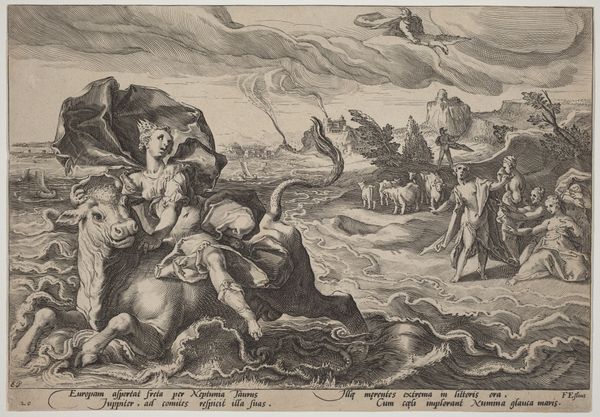
print, engraving
# print
#
landscape
#
mannerism
#
genre-painting
#
history-painting
#
engraving
Dimensions: height 101 mm, width 140 mm
Copyright: Rijks Museum: Open Domain
Curator: Welcome. Today, we’ll be looking at a print by Antonio Tempesta titled, "Hunters Chasing Ostriches into a Pit," created in 1598. It's currently held at the Rijksmuseum. Editor: My initial response is of dynamic disarray. It's a landscape, certainly, but dominated by the flurry of movement. Curator: Precisely. Note how Tempesta utilizes diagonal lines and the varying depths to convey action. The pit acts as a visual barrier, segmenting the composition while heightening the sense of frenzied pursuit. The textures achieved through the engraving process are particularly notable here, rendering the landscape and figures with great detail. Editor: The scene undeniably reflects a hunt, but beyond that, it points to larger socio-political structures. Who were the hunters and what did their actions represent? Hunting scenes were very popular, in particular within privileged communities, reflecting their assumed right of controlling nature’s bounty. I find it curious that such “historical” approach is adopted when depicting ostrich hunts which, from the outset, were associated with foreign lands and foreign power. Curator: The formalized groupings of figures and animals speaks to the artistic style of Mannerism. The almost artificial arrangement contrasts with the naturalistic theme, thereby serving to aestheticize an otherwise barbaric action. And the clothing details are exquisitely rendered—note how they identify specific social classes, as hunting at this time was a marker of status and privilege. Editor: This imagery must be read, for me, alongside the rise of global trade and the early stages of colonial exploitation. Were these ostriches exotic imports? How complicit was art in framing our relationships to animals as both wondrous curiosities and sources of exploitation? How do issues of class, exoticism, power and even coloniality come together in this fraught image? Curator: Well, viewing it through that lens provides an entirely different reading. But focusing on the composition again, there's also an intriguing flattening of space which seems a deliberate formal decision. It makes you wonder if Tempesta ever witnessed anything like this. Editor: Which brings it to, what is history? Do we privilege certain documents or certain artistic traditions above all else in its recreation? Does the absence of the ostrich’s voice make history incomplete, as an account of human dominion and self-importance? It's a compelling work regardless. Curator: Indeed. Thank you for shedding light on the layered, charged nature of this image. It has offered a wonderful counterpoint to my own reading of it.
Comments
No comments
Be the first to comment and join the conversation on the ultimate creative platform.
